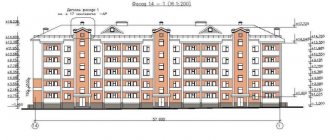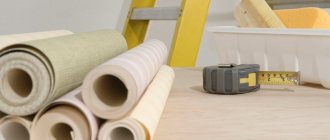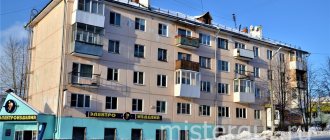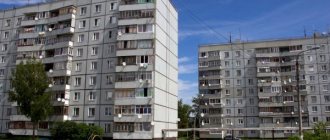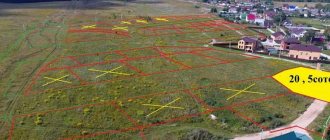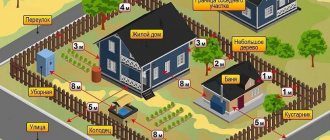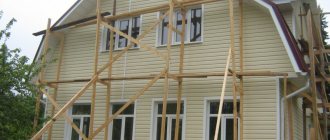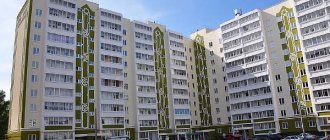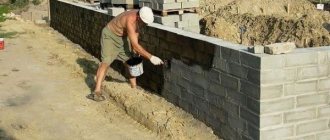Many claim that the height of a 5-story building is 15 meters. This is determined by calculating the number of floors per floor height, which we consider equal to 3 meters. In reality, this is not entirely true and the height of the house can vary from 14 to 20 m or more. Let's find out why it is different and what it consists of.
Panel five-story building
SNiP gives a classification of buildings based on the number of floors. According to them, five-story buildings are classified as mid-rise apartment buildings (MCDs). Next come high-rise buildings, these are 6-9 storey buildings with a height of up to 30 meters, multi-storey buildings - 10-16 and high-rise buildings over 17.
You can correctly calculate the height of any house by knowing several parameters. This is the height:
- floors;
- roofs;
- base
The main parameter, of course, is the floor height. Using it, you can determine the height of at least a 2-story building or 14. Therefore, let's figure out this value.
The height of a 5-storey building is how much in meters
If we take the most popular and standard answer, we get -15 meters. But experts know that the height of five floors can be 14 meters and even more than 20 meters. It all depends on the typical house design. It must be said that quite recently, houses 15 meters high were the most popular standard house designs. Low buildings in which you can do without an elevator and fire safety devices.
Typical "Khrushchev".
These were Soviet standard panel or brick residential buildings, usually 5-story, with small-sized apartments, the well-known “Khrushchev” buildings.
Types of floors [edit | edit code]
Basement floor - a floor with the floor level of the premises below the ground level to a height of no more than half the height of the premises that are located in it.
Basement floor - a floor with the floor level of the premises below the ground level by more than half the height of the premises.
Underground floor - a floor whose floor level is below the ground level.
Above-ground floor - a floor with the floor level of the premises not lower than the ground level.
Technical floor - a floor for placing engineering equipment and laying communications; can be in the lower (technical underground), upper (technical attic) or middle part of the building.
Attic floor (attic) - a floor in the attic space, the facade of which is completely or partially created by the surface (surfaces) of a sloping or sloping roof.
Characteristics of brick, large-block and panel “Khrushchev” buildings
Khrushchev buildings were built according to standard designs in the style of functionalism. Nothing extra. They were panel, brick, and less often large-block. As a result, the most famous were the Khrushchev panel buildings. Because they were quickly built from pre-prepared reinforced concrete panels.
The speed of construction of “Khrushchev” buildings was very high, so the quality of the houses often suffered because of this. In addition, these houses had low thermal insulation of external walls and poor sound insulation inside the house.
Typically, the height of most “Khrushchev” buildings was 4 or 5 floors. Because the height of a five-story building is the maximum height where building codes do not require an elevator. As a result, the 5-story format replaced the 4-story format due to the opportunity to build more apartments.
“Khrushchev buildings” could have 2 or 3 floors. These were more common in rural areas or small towns. Some series of Khrushchev buildings even had a garbage chute. Of course, the height of the house directly depended on the height of the ceiling.
Large block "Khrushchev".
Suitable pipes
It is worth approaching the solution of the issue as responsibly as possible. It’s better to take your time and take into account important points:
- Installation method
- Maximum pressure indicator
- Presence or absence of a pump in the system
- Number of pipes in the system design
Steel pipes. Popular in markets until recently. They are often used in communications where a large cross-sectional diameter is required. Steel pipes conduct heat well, do not expand when heated strongly, and can easily withstand high pressure.
Pipes retain strength even when bending. Able to withstand temperature changes without consequences. Optimal balance between price and quality. The difficulty lies in installation, which requires the use of expensive equipment.
Alloy steel. Quite strong material. The composition of the material contains impurities, which improves the efficiency of the system. Advanced metal pipes are corrosion resistant and easy to maintain. The weight of the structure is significantly reduced. Pipes are used in a system with abnormal pressure and temperature conditions. It is permissible to use hot steam as a coolant.
Height of a 5 storey building
For example, in a Khrushchev building where the ceilings are 2.40, the height of a 3-story building will be approximately 9 meters. The height of the 5-storey building is 15 meters in height.
Apartments in Khrushchev's houses were mostly one- and two-room. There were fewer three-room apartments. Four rooms is very rare.
- The ceiling height in Khrushchev-era buildings is from 2.45 to 2.6 meters.
- In some series of block houses it is 2.7 m.
- Kitchen area - from 4.9 to 7.1 m² (up to 7.5 m² in some apartments of series II-18 houses). Basically the kitchen had an area of 5.5 to 6 m²
- The bathroom, in most cases, is adjacent in all apartments.
- Two- and three-room apartments usually have a walk-through living room.
In addition, the “Khrushchev buildings” were provided with: central heating, cold water supply, sewerage, natural exhaust ventilation, and a kitchen stove. Hot water supply could be either central or individual, using gas water heaters or solid fuel water heaters. With rare exceptions, most apartments had a balcony (except for those located on the first floors); in some typical Khrushchev-era apartments, the end apartments had loggias.
"Khrushchev refrigerator"
Almost everywhere under the Khrushchev kitchen window, where there was very little space, they made a specific built-in closet type closet for storing food. The thickness of the outer wall in this closet was usually half a brick. In another version, a special hole was made to the outside, which served as ventilation. During the cold season, the cabinet replaced the refrigerator.
Under the window is a “Khrushchev refrigerator.”
Pantry
In many Khrushchev-era projects, especially the 1-335, 1-447, 1-464 series, the apartments have fairly large (2–3 m2) dark rooms without windows for storing things (storage rooms). In later designs, the size of closets was significantly reduced, from rooms to built-in wardrobes. In the projects of Brezhnev's houses, due to the proliferation of cabinets and other furniture, storage rooms were gradually abandoned.
Window in the bathroom
Even in the Khrushchev apartments, a window was made between the kitchen and the bathroom. (Sometimes with a separate bathroom - between the bath and toilet). A window about 40 cm high was made under the ceiling. In the kitchen it was opposite the street window. As a result of this solution, it was possible to save on electricity when visiting the bathroom.
Panel Khrushchev buildings were divided into demolishable and non-demolishable. The Khrushchev apartment buildings of the demolished series were built to temporarily solve the housing problem and were designed to last 25–30 years. Khrushchev buildings of the unbearable series had a design life of 50-60 years. But as a result of the study, it turned out that the service life can be extended to 150 years (if repaired in time). By the way, brick Khrushchev buildings belong to the unbearable series and have a service life of at least 100-150 years.
It should be noted that the window, about 40 cm high, is located under the ceiling. Moreover, in the kitchen it is located opposite the street window.
A little history
Since the urbanization process is still in the expansion stage, a city center with private buildings is complete nonsense. The population of large cities is increasing from year to year. Therefore, the problem of people's resettlement remains constantly pressing.
Cities cannot expand indefinitely. The seizure of agricultural land for residential areas cannot lead to anything good. And covering significant distances to get to the right place is also not an option for residents of megacities.
Apartment buildings are nothing new. But the building, capable of housing a hundred families in an area that was previously occupied by 2-3 private buildings, has become a kind of lifesaver. After all, if you resettle this number of people into one-story houses, you will need to build up an entire block.
An area with standard nine-story buildings Source 3dvector-pro.ru
How to determine the height of a building
Calculate the height of buildings as follows: multiply the height of the ceiling + ceiling by the number of floors. Typically, the average height of one floor is 3 meters. Then, the height of a 9-story building is 27 meters.
Therefore, it is not difficult to calculate how many meters, for example - 15 floors? It turns out that 45 meters.
- The height of a 25-story building is approximately 75 m.
- The height of a 20-story building is 60 m.
- 25 meters, how many floors? We divide 25 ⁄ 3, approximately 8 floors.
- The 16-storey building will be 48 meters high.
- 12-storey building with a height of -36 m.
- How many floors are there in 35 m? The answer is approximately 12 floors. By the way - 35 floors. will be 105 m.
Don't forget that these are all average numbers. It all depends on the project. For example, the height of the ceilings of the “Stalinist house” exceeded standard Khrushchev buildings. The ceiling height was at least 3 meters. The ground floors in these houses were made higher, since they usually housed shops, studios, a post office and other social facilities. Houses of this type were designed for 125 years of operation.
Need to mark. that the multi-pitched roof further increased the height of the building. Therefore, according to the standards of that time, it turned out that taking into account the roof and the calculation of ceilings of 3 meters, the height of a 5-story building was 20 meters and above. Therefore, the usual calculation of the height of the house can be done based on the following parameters:
Classification of heights and types of buildings with different number of storeys
To calculate the total height of a house, building, structure, the distance from the floor to the ceiling of each floor and the thickness of each interfloor ceiling are taken into account. If the attic space is higher than 1.8 m and wider than 1.6 m, and the basement floor rises above the ground by more than 2 m, then they will also be counted as separate floors
This is stated in the explanations of Rosreestr - for example, letter from the FSGR, cadastre and cartography No. 4200-AB/20 dated May 12, 2020 (“On the number of floors of individual housing construction projects”).
A brief general classifier of the number of storeys and heights of buildings:
- Low-rise. The number of floors is from 1 to 3. The maximum height of the house is up to 12 m.
- Mid-rise. Floors – from 3 to 5. Building height – up to 15 m (5-storey standard).
- Increased number of storeys. From 6 to 10 floors. The highest height is 30 m.
- Multi-storey. Number of floors – 10-25. Allowable heights are grouped by building categories.
- High-rise. Floors - from 25 to 30. Height starts from 100 m or more.
Height groups of multi-storey buildings depending on their category:
- Category I (houses with a maximum number of floors – 17-18) – total height no more than 50 m;
- II cat. (up to 20 floors) – height up to 75 m;
- III cat. (25 floors) – up to 100 m high.
Examples: The height of a category II multi-storey building with 15 floors is approximately 55 meters. According to records for 2022, the tallest building in Russia and throughout Europe is the Lakhta Center in St. Petersburg. Its height is 463 m. This is significantly higher than the buildings of the complex of the tallest objects in Moscow - Moscow City. But the tallest building in the world is a super skyscraper in Dubai (UAE). It has 163 floors, has the name “Burj Khalifa” and rises above the ground by as much as 828 meters.
Vertical dimension definition
- Foundation + roof. The depth of the foundation is different everywhere. For example - 2.20 m. + 5 m. = 7.5 m. The height of the floor with ceilings is approximately 3 m. Then the height of the five-story building will be 22.5 m.
- If the house has no basement, and the vertical from the ground is 1.5 m. We calculate the height of each floor together with the ceiling - 15 m. We add the roof height (according to the standard 5 m.) We get 21.5 m.
- It would be easier to determine the height of a house if there was a standard vertical floor dimension. But there is no standard. Because there have always been different house designs. Some had a basement and a multi-pitched roof. Others with a semi-basement and attic. Houses were built with a basement and a high ground floor. Houses with a flat roof but with a 2.5m basement were also built.
- Therefore, on average, a really 5-story building is about 15 m long. It all depends on the thickness of the floor and the height of the floor.
- The very first brick houses could be 14 m high. The ceiling height was small - 2.40 m. By the way, in “Stalinist” houses the amount of air per person was taken into account. In the planning of “Khrushchev” buildings, in the early stages, they were not interested in such trifles.
- Soviet-era houses are a thing of the past. Along with them are standard projects with GOST standards, standard blocks and parts. Therefore, it is simply impossible to determine at what height the apartment is located if you do not know the design of the house. Therefore, a five-story building, taking into account the roof, can be from 22-28 m vertically.
The height of a five-story building. A variant of a standard house design with 2 entrances.
Is it difficult to build high-rise buildings?
If you are looking for a master class on how to build a multi-story house with your own hands, then you better give up this idea. Since without special calculations your house will not stand for long. Often people cannot cope with the complexity and volume of work even when building a one-story private house.
We present the amount of basic materials needed during construction. To build one floor, you need 4,500 bricks, 10 kg of plaster, 10 floor slabs and much more. And the height of a 9-story building is not just abstract numbers. There are costs for the foundation, roofing, etc. In addition, a large workforce and special equipment are needed to lift building materials to a height.
How to understand projects
"Stalin", Stalin's houses
All names come from the name of Stalin, during whose reign these houses were built. The main building material for the construction of Stalinist houses is brick. Brick houses were distinguished by higher number of storeys, elegant facades, spacious apartments, and better sound insulation.
These are large, beautiful houses with Soviet attributes. The facade of the house was usually decorated with stucco decoration. The outside of Stalin's houses was covered with plaster; large "nomenklatura" houses could be faced with stone or ceramic tiles. These houses have a high ground floor. The size to the ceiling is at least 3 meters. Hence the calculation of the height of the house. Therefore, the height of a five-story building is at least 20 m.
“Stalin” is the common colloquial name for apartment buildings built in the USSR from the late 1930s to the late 1950s
After Stalin, Khrushchev began to fight against “excesses” and before the start of mass construction of Khrushchev houses, “torn” Stalinist houses were erected without stucco decoration and often without plaster.
"Khrushchevka"
Who doesn't know them! By the way, there are still plenty of them all over the country! Now they are being demolished in big cities. But at one time, the “Khrushchevs” made it possible to resolve the acute housing shortage. At that time, no one was interested in the appearance of housing. Therefore, the apartments were small, the architecture of the houses was extremely simple and functional. They were built quickly, from standard parts, but there were many disadvantages. For example, the ceiling height was 2.48m. Later it was increased to 2.60 or 2.64m.
By the way, low-rise Khrushchev apartment buildings were built not only in villages, but also in small towns. Panel houses were popular. Because they were built quickly.
"Brezhnevki"
The name of a series of houses built in the USSR from the mid-1960s to the end of the 1980s, mainly during the reign of L. I. Brezhnev. The name “improved apartments” is also found. For more spacious houses built in the 1980s - “new layout”.
These are the same “boxes” as “Khrushchev buildings”. But in these houses the ceiling height was 2.7m. There were more spacious stairs and landings. Therefore, the height of the five-story building was completely different. The roof of all Brezhnevkas is flat, covered with bitumen materials, and, unlike Khrushchevkas, is equipped with internal gutters. Low-rise houses for rural and suburban construction can have two- or multi-pitched slate roofs.
Brezhnevkas were built in the USSR from the mid-1960s to the end of the 1980s.
Brezhnev's houses differ from Khrushchev's in the following features:
- Availability of a watch (since 1970), an elevator and a garbage chute; in later Brezhnevkas there is a staircase, etc. “back door” are combined;
- Higher number of floors, the most common are houses with a height of 9 (in later versions also 10), 12 and 16 (later 17) floors. In many cities, “Chinese walls” were also built - long Brezhnev roads with a large number of entrances;
- A large number of apartments on the landing - from 4 to 8;
- Larger area;
- A large number of rooms in apartments: if in the most popular series of Khrushchev buildings 1-447, 1-335, 1-464 there are mainly two-room and one-room apartments, then in Brezhnevkas four-room apartments appeared and the number of three-room apartments increased;
- Separate bathroom;
- Lack or fewer passage rooms;
- A relative variety of shapes (for example, both tall and wide buildings, rounded).
In many cities, “Chinese walls” were built - long Brezhnev roads with a large number of entrances.
Why nine and not ten
Since the mid-1960s, the massive five-story building was replaced by a nine-story building, also with a floor height of 2.5 m, with a combined elevator-staircase unit and one elevator per block section (entrance).
Why did they build nine floors, and not ten, for example, so to speak, for good measure? Because the standard height of an automated fire escape based on a truck chassis, which has been equipped with fire departments since the 1960s, is 30 m. These characteristics allow you to reach from the fire passage to the evacuation mark of 28 m with a small margin.
If the height of the building is above this level, the project must provide escape routes in case of an emergency, namely, smoke-free stairs and two elevators, passenger and freight. Brezhnevkas also had to be built quickly and cheaply. Therefore, it was not economically feasible to build ten-story buildings with two elevators and an isolated staircase for standard block sections, where there are four apartments per floor (602nd series) or six apartments (606th series).
With the advent of freight elevators, the height of mass development in the mid-1970s exceeded the mark of 28 m, and the number of floors of constructed housing increased by three to five floors at once.
Walls
Another mechanism for misleading the Customer. Typically, websites present projects with a drawing of the final turnkey option. This is a standard solution for people to see and understand what kind of house they will end up with. In many projects, part of the internal walls are designed in a frame version to reduce the cost and due to the inexpediency of making them permanent. These frame partitions are installed after the house has settled at the finishing stage.
Before concluding a contract, it is very important to clarify and know which walls are permanent and are included in the price at the initial stage. The trouble is that some contractors are so keen on reducing the cost of the project that they leave only the external walls permanently built.
This can be fraught, especially for larger houses. With this layout, deformation of the walls is possible when the house shrinks. The walls will subsequently wobble and there is even a danger of the structure collapsing
The trouble is that some contractors are so keen on reducing the cost of the project that they leave only the external walls permanently built. This can be fraught, especially for larger houses. With this layout, deformation of the walls is possible when the house shrinks. The walls will subsequently wobble and there is even a danger of the structure collapsing.
We must not forget about the other materials used in assembling the walls. The main ones are dowels and inter-crown insulation. Dowels, in other words dowels, are used to fasten the crowns of the box to each other vertically. They can be round or square.
Some companies use ordinary construction nails or rebar for quick assembly. It is not right. In the future, gaps may appear between the rims, because nails will prevent the walls from shrinking evenly.
Intercrown insulation is quite different. Moss, tow, jute, and artificial materials are used depending on the wall material
It is important that the contractor uses appropriate insulation of the required thickness so that subsequently there is no blowing from all the cracks
We use 100% jute insulation 10-12mm, so that after shrinkage, due to the thickness of the layer, all the joints between the crowns of the walls of the house are filled.
Before signing the contract, you must know which walls made of logs or timber will be installed at the first stage “for shrinkage” and what consumables the contractor will use.
